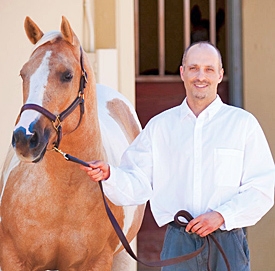
[Update: CDFA confirms 10 cases of equine herpesvirus in California - including horses in the counties of Kern, Placer, Stanislaus, Amador and Napa. One horse in Kern County was euthanized after showing severe neurologic signs often associated with the disease.]
Magdesian said the animals at UC Davis were in stable condition as of yesterday morning.
Equine herpesvirus is highly contagious and can cause a variety of ailments in horses, including respiratory disease, abortion in broodmares, and myeloencephalopathy, the article said. The virus is not transmissible to humans. Signs of equine herpesvirus include fever, lack of coordination, weakness or paralysis of the hind limbs, and incontinence. The virus is generally passed from horse to horse when affected animals sneeze or cough, and contact with nasal secretions.
TheHorse.com reported that veterinarians in several states are determining the extent of a equine herpesvirus that may be tied to cutting horses involved in a April 29-May 8 championship show in Odgen, Utah. Several animals that participated in the championship were diagnosed with the neurologic form of the illness, and at least two horses were euthanized when their conditions deteriorated.
While the isolation facility at UC Davis is currently under quarantine, the general hospital remains open.
"The two horses with EHV-1 (at UC Davis) are under maximal isolation with no contact with the general hospital," the story quoted Magdesian. "All horses currently at the general hospital have tested negative for EHV-1. However, because of the external cases in the horse community, we have high level precautions in place to do everything possible to prevent a positive horse from entering our hospital."